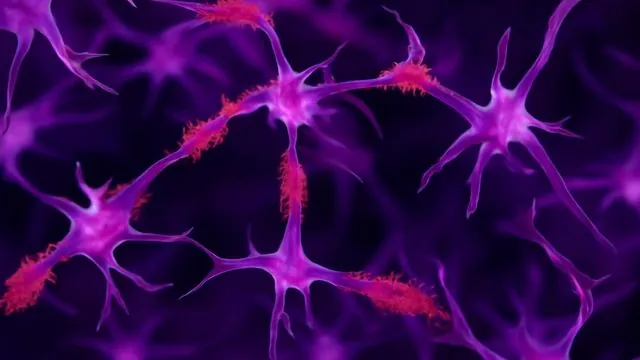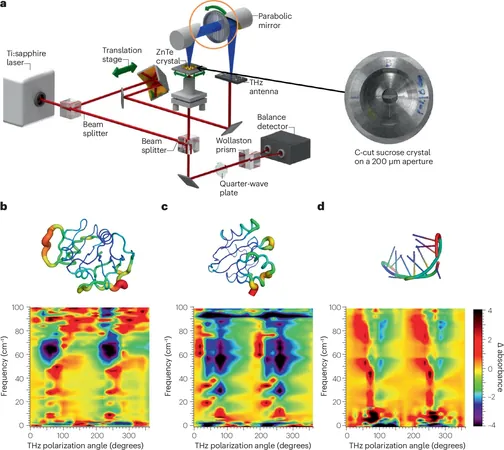
Unlocking the Secrets of Tau: Scientists Create Synthetic Mini Prion That Could Transform Alzheimer's Research
2025-04-30
Author: Daniel
A Groundbreaking Discovery in Neurodegenerative Disease Research
In a remarkable breakthrough, scientists at Northwestern University and UC Santa Barbara have engineered the very first synthetic fragment of tau protein that behaves like a prion. Dubbed the "mini prion," this innovative fragment folds and organizes into misfolded strands, or fibrils, that can pass on their abnormal shape to healthy tau proteins, further propagating the misfolding.
The Link to Tauopathies and Alzheimer's Disease
The accumulation of misfolded tau proteins in the brain is a hallmark of tauopathies, a group of neurodegenerative disorders that includes the infamous Alzheimer's disease. Understanding how these proteins misfold is key to developing new diagnostic and therapeutic tools desperately needed in the fight against these devastating conditions.
Unraveling Water's Role in Misfolding
Alongside this incredible synthesis, the researchers uncovered intriguing insights about the water molecules surrounding the tau protein. They discovered that a common mutation used to model tau diseases subtly transforms the properties of the water—and this alteration plays a pivotal role in how tau proteins misfold.
A New Dawn for Tau Research
"The range of neurodegenerative diseases linked to tau is remarkably broad," noted Songi Han, the study's lead author. "From chronic traumatic encephalopathy in athletes to progressive supernuclear palsy, creating self-propagating tau fragments is a giant leap toward a nuanced understanding of these intricate diseases."
The Challenge of Diagnosing Neurodegenerative Diseases
Currently, diagnosing tau-related diseases relies on patient surveys and symptom observation, making it difficult to secure timely and accurate evaluations. Brain biopsies remain the gold standard, yet they can only be conducted post-mortem. Han emphasizes that creating stable tau fibrils for research is essential for developing new biomarkers.
Simplification Leads to Clarity
Recognizing the complexity of full-length tau proteins, Han’s team sought to design a simplified, prion-like version. By concentrating on a 19-amino-acid segment known as jR2R3, identified for its role in numerous tau-related conditions, they successfully fabricated a mini version that retains the disease’s hallmark seeding activity.
The Role of Water in Protein Behavior
Drawing a parallel to organizing strands of limp spaghetti, Han illustrates how disordered proteins find stability through interaction with surrounding water molecules. The P301L mutation doesn't just affect the tau protein directly—it also rearranges the water around it, creating a structured environment that facilitates protein misfolding.
What Lies Ahead for Alzheimer's Research?
With this synthetic tau model now established, the research team is poised to further explore its properties and potential applications. Their ultimate goal? To disrupt the prion-like activity of tau fibrils to pave the way for innovative diagnostic tools and therapeutic solutions.
"Once these tau fibrils are formed, they perpetuate the cycle of misfolding indefinitely," Han warns. "If we can find a way to inhibit this process, we may unlock new avenues for treatment against tau-related diseases."




 Brasil (PT)
Brasil (PT)
 Canada (EN)
Canada (EN)
 Chile (ES)
Chile (ES)
 Česko (CS)
Česko (CS)
 대한민국 (KO)
대한민국 (KO)
 España (ES)
España (ES)
 France (FR)
France (FR)
 Hong Kong (EN)
Hong Kong (EN)
 Italia (IT)
Italia (IT)
 日本 (JA)
日本 (JA)
 Magyarország (HU)
Magyarország (HU)
 Norge (NO)
Norge (NO)
 Polska (PL)
Polska (PL)
 Schweiz (DE)
Schweiz (DE)
 Singapore (EN)
Singapore (EN)
 Sverige (SV)
Sverige (SV)
 Suomi (FI)
Suomi (FI)
 Türkiye (TR)
Türkiye (TR)
 الإمارات العربية المتحدة (AR)
الإمارات العربية المتحدة (AR)